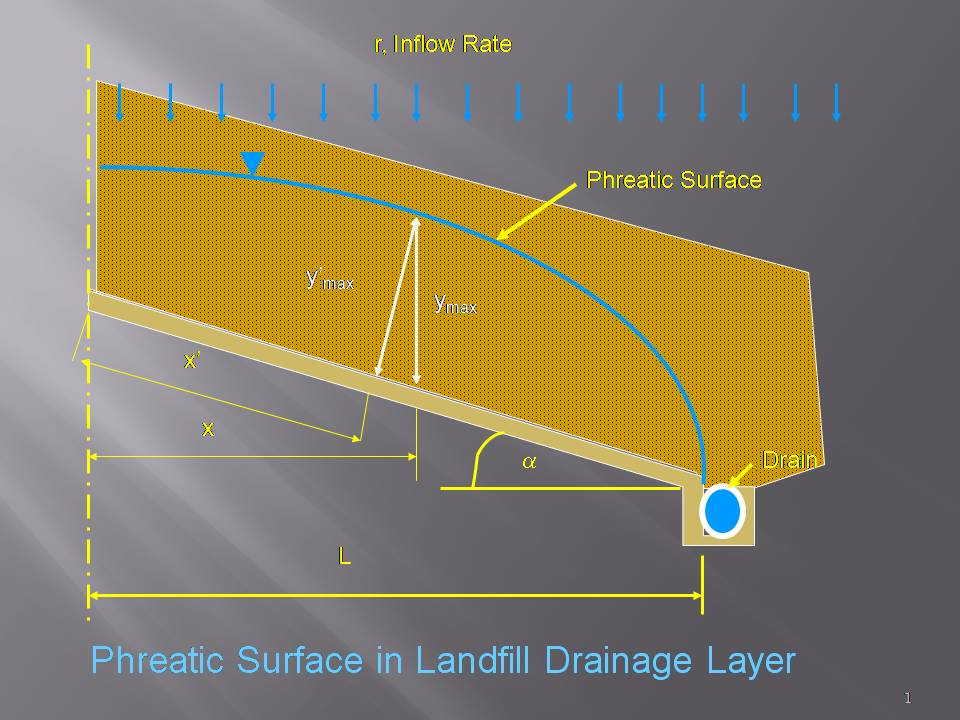As
soon as Tasks 1 and 2 are completed, key landfills and key locations,
to be used as case studies, will be identified. The case
studies
identified in this manner will be carefully evaluated to assess the
performance of the leachate collection system for the past few
years. A technical review of the design of the leachate
collection system at each chosen landfill site will be performed in
Task 3. Data from these locations will be used to calibrate
the
clogging model predictions.
Task 4 – Revisiting
Florida Regulations concerning design and maintenance of LCS
Based
on Task 1 to Task 3, the predicted change in hydraulic properties,
along with the existing leachate collection system layout (design),
will be used to re-evaluate the head on liner for all the selected case
studies. The results of this investigation will be used to
examine the adequacy of the design methodology of leachate collection
systems at those particular locations. The findings of this
study
will also be used to estimate the service life of LCSs in different
regions of Florida.
Progress Report
Rationale:
The
purpose of the LCS is to collect and remove the leachate from the
bottom
of the landfill and therefore minimize the leachate head which provides
the
driving force for the leakage of contaminants to the surrounding
environment. Since the contaminating lifespan of a landfill
may
be decades or even centuries, the performance of the LCS is critical
for a well-designed modern landfill and there is a need to be able to
predict the service life of a given system.
